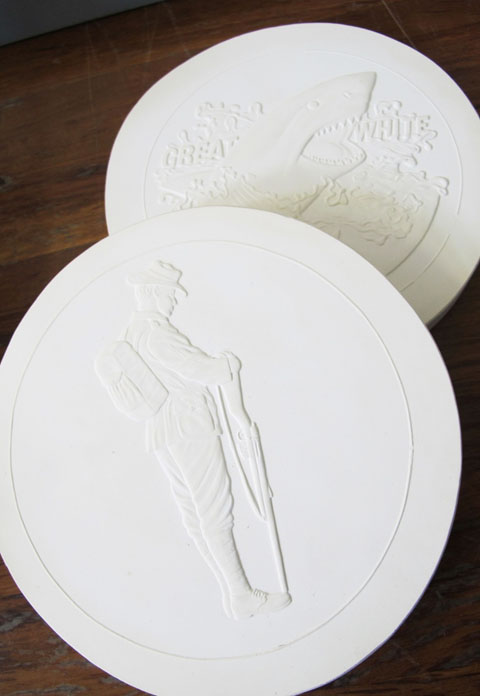Claire Rowson, as a numismatic engraver at the Perth Mint, explores many aspects of numismatic creation and conservation in her role. The main topic of her address at the WA Shipwrecks Museum on November 30 was die-making innovation and the consequences of this. Coin dies, being essential in coin creation, stamp impressions on a piece of metal to create a coin, and although their construction process may have changed over time, their importance remains. A dynamic and progressive tutorial, Claire communicated her desire to push the world of numismatic conservation into the future in a historically-minded industry.
Both conservators and civilians will be familiar with the Perth Mint, functioning as a powerhouse of numismatic output, repository for historical collections, and as a heritage precinct in its own right. Although the plaster method of numismatic production predates Claire’s employment, she has a deep understanding of the traditional methods of the die manufacturing process that were once commonplace at the Perth Mint. Historically, the process began when an artist created sketches of a future coin in clay. An impression was then made in plaster or rubber and further sculpted and a final cast was made in either epoxy or hardened rubber, complete with obverse and reverse impressions of a future coin. The final step involved the reduction machine, where large models were reduced into master tools, these used to create coin dies in steel.
Claire noted that since the 1950s, when there were 4 reducing machines at the Perth Mint, this method of die creation has become increasingly outmoded. The electronic process, involving digital sculpture and CNC machining has been developed within the last fifteen years. Like the plaster method, the electronic procedure begins with an artistic sketch. This is then modelled in digital sculpting software and the metals, sizes, weights and reliefs are considered. Claire has been involved in the creation of coins as small as 0.5grams and as large as 10 kilograms, stressing that every coin is different thus review of previous work is paramount. Modelling software allows designers to sculpt a coin design until the digital sculpture most closely resembles the two-dimensional sketch. Succeeding this, the digital sculpture is given the finishing touches, those being further sculpting, adding a convexity to the coin, and adding a coin rim. The finalised digital sculpture is transferred into the cutting machine, and from here, the electronic process mirrors the plaster process concerning the use of a reduction machine and steel to make dies.

Claire communicated that the plaster and electronic processes each have highlights and shortcomings. The new technique allows engravers to create more detailed coins in a matter of days, emphasised by Claire as a positive innovation, whilst coins took up to six months to be created with the plaster technique. Despite the computerized aspects of the electronic method, the process still requires human input as evidenced from the method description. Claire also mentioned that despite the electronic method being a more viable option in a modern production context, a community exists that still values hand-sculpted designs in plaster, making the associated skills and materials worthy of conservation efforts.
On behalf of those who attended Claire’s talk and the WA Shipwrecks Museum, we sincerely thank and applaud Claire for expanding the dialogue involving numismatic creation and conservation, and wish her luck on her future endeavours.
Stirling Kain, Conservation Volunteer at the Western Australian Museum